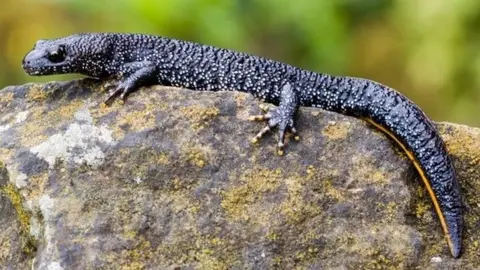Cambridgeshire school expansion delayed by newts
 BBC
BBCGreat crested newts are holding up expansion at a school leaving pupils to be taught in mobile classrooms.
Cambourne Village College in Cambridgeshire planned a new wing for science laboratories, workshops, a business studies suite and restaurant.
It will be ready by January 2020, the Local Democracy Reporting Service said.
A Cambridgeshire County Council spokesman said the great crested newts, a protected species, would be moved to an alternative habitat.
 Google
Google"Four, high-quality mobile classrooms will provide supplementary teaching space at the college until the new facilities are ready in January. There has been no impact on September admissions," the spokesman added.

Great Crested Newts
- Are the biggest newt species in the UK and have been around for approximately 40 million years
- During the breeding season males develop a jagged crest which has a break at the base of the tail and females take on a "bulky" appearance
- Adults grow up to 15cm (6in) in length
- Their skin is black or dark brown with a rough, warty appearance (they are also known as the "warty newt") and their underside is bright orange with irregular black blotches
- Populations have disappeared from many sites across Europe due to habitat loss and intensification of farming practices
- Famous newt aficionados include Labour politician Ken Livingstone and Gussie Fink-Nottle from PG Wodehouse's Jeeves and Wooster comic novels
Source: Froglife/BBC
